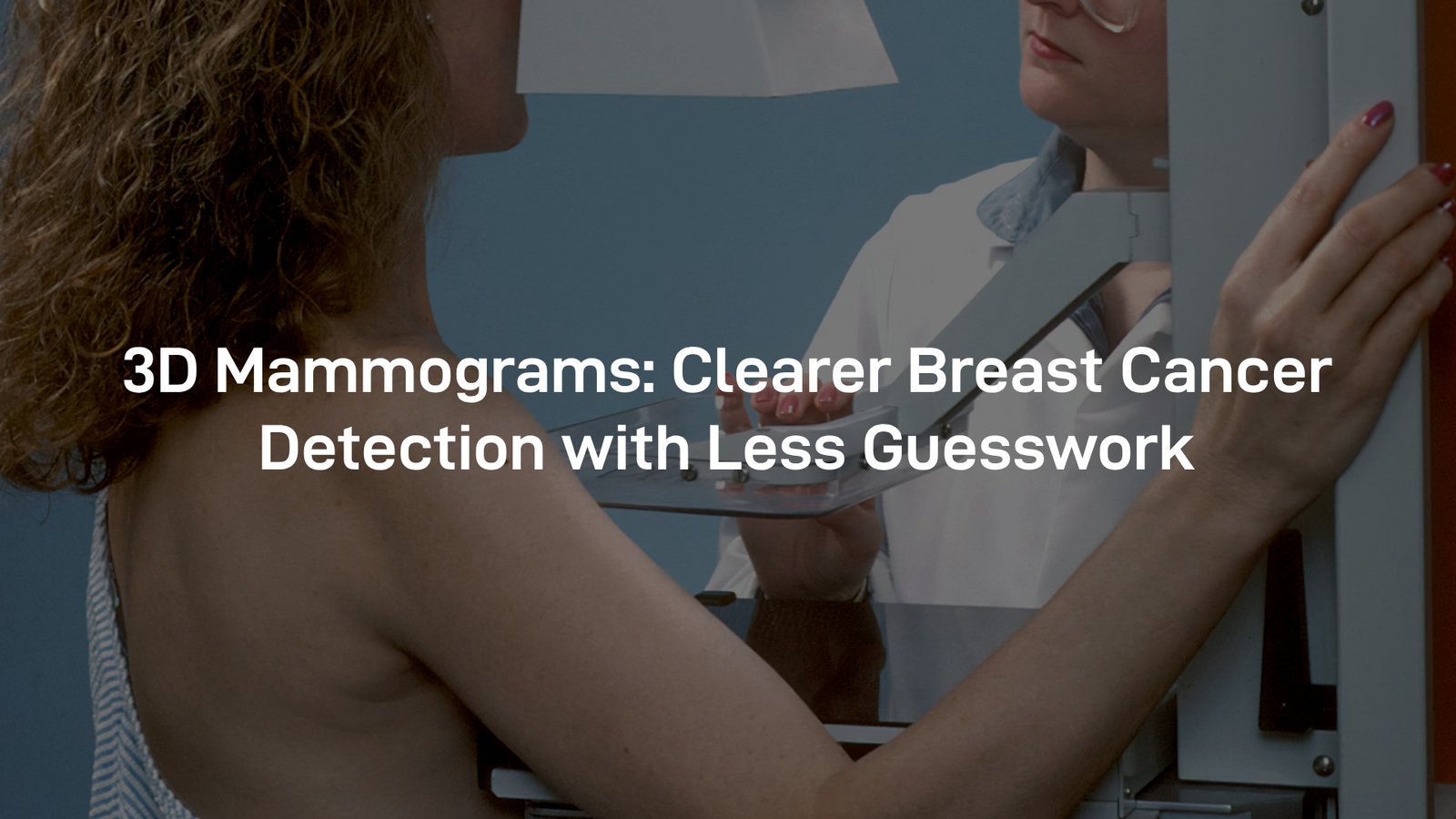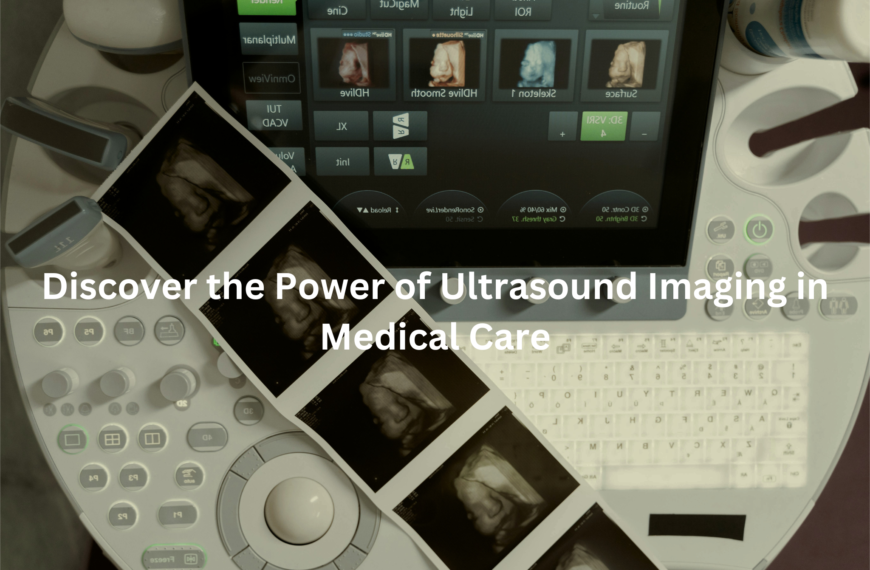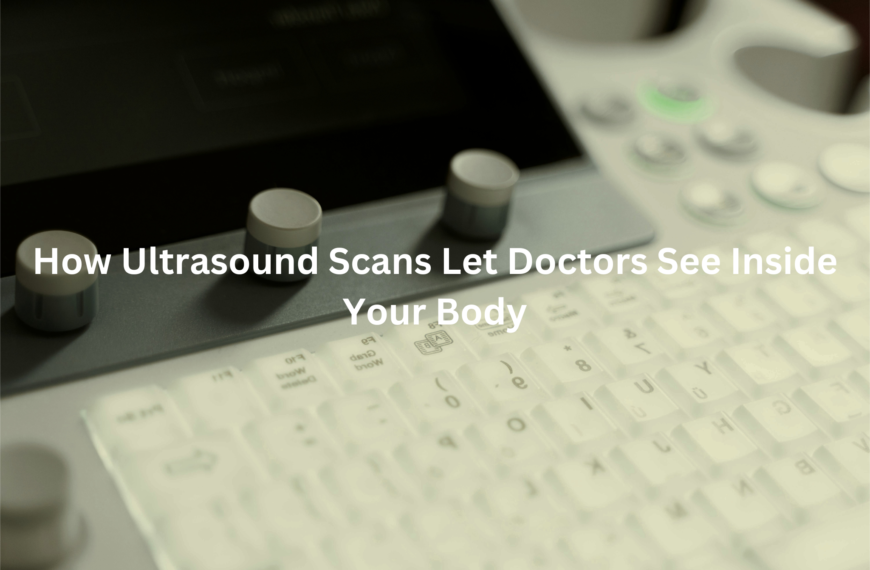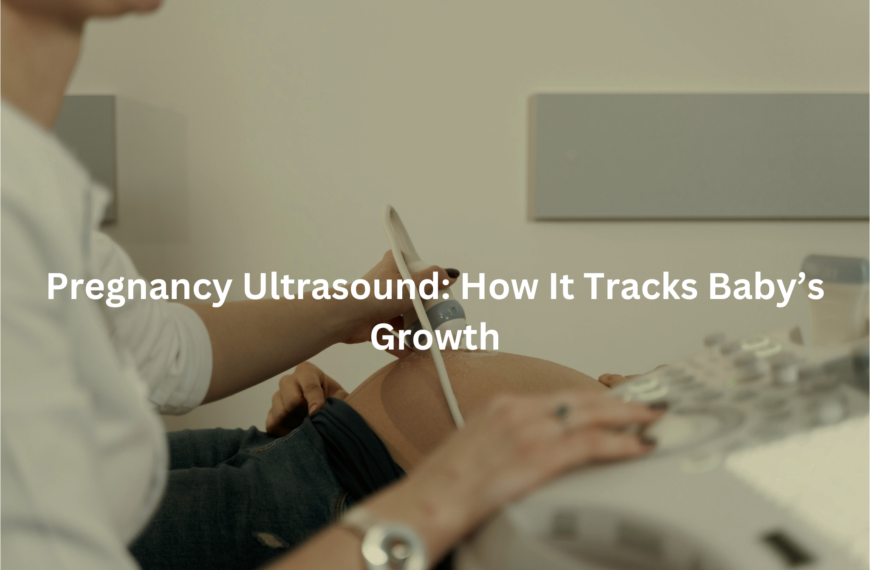Get clearer results with 3D mammograms—better accuracy, fewer false alarms, and improved detection, especially for women with dense breasts.
A 3D mammogram, also known as digital breast tomosynthesis (DBT), is an advanced breast screening tool that creates a detailed three-dimensional image of the breast. Unlike traditional 2D mammograms, it captures multiple angles, reducing false positives and making it easier to detect abnormalities, especially in women with dense breast tissue.
This technology is improving breast cancer detection, offering greater accuracy with minimal radiation exposure.
Key Takeaways
- Higher Accuracy: 3D mammograms provide clearer images, improving early cancer detection and reducing unnecessary follow-ups.
- Better for Dense Breasts: This screening method is especially useful for women with dense breast tissue, where traditional scans may miss abnormalities.
- Low Radiation, High Benefit: The radiation dose is minimal, making it a safe and effective screening option.
How 3D Mammograms Work
A 3D mammogram, or digital breast tomosynthesis (DBT), takes multiple X-ray images of the breast from different angles and combines them into a detailed, three-dimensional view. This allows radiologists to examine breast tissue layer by layer, making it easier to detect abnormalities.
What Happens During a 3D Mammogram?
- Positioning – You’ll stand in front of the mammogram machine while a technician helps position your breast on a flat surface.
- Compression – A plastic paddle gently presses the breast to spread out the tissue. This is essential for clear images and to minimise radiation exposure.
- Imaging – The machine moves in an arc over your breast, capturing multiple images in just a few seconds. You may be asked to hold your breath briefly to prevent blurring.
The process is very similar to a standard 2D mammogram but provides a more detailed view, particularly for women with dense breasts. (1)
How 3D Mammograms Compare to 2D Mammograms
More Accurate, Fewer False Alarms
A traditional 2D mammogram takes two flat images of the breast—one from the top and one from the side. However, this can make it difficult to distinguish between normal overlapping tissue and potential tumours.
A 3D mammogram, on the other hand, captures multiple thin slices of the breast tissue, reducing overlap and making it easier to identify abnormalities. Research suggests 3D mammograms can improve breast cancer detection rates by up to 27% compared to 2D scans.
Better for Women with Dense Breasts
Dense breast tissue appears white on a mammogram—the same colour as potential tumours—making it harder to spot abnormalities. 3D mammograms allow radiologists to view breast tissue in layers, improving accuracy.
Lower Chance of Needing Extra Tests
False positives—when a scan incorrectly suggests cancer—is a common issue with 2D mammograms. Because 3D imaging provides a clearer picture, fewer women are called back for unnecessary follow-up tests and biopsies. (2)
Who Should Consider a 3D Mammogram?
3D mammograms are suitable for anyone needing a breast screen, but they can be particularly beneficial for:
- Women with dense breasts – Because 3D imaging provides clearer images.
- Women at higher risk of breast cancer – If you have a strong family history of breast cancer or have previously had breast abnormalities.
- Women experiencing symptoms – If you have a lump, pain, or nipple changes, a doctor may recommend a 3D mammogram for a more detailed assessment.
What Are the Benefits of a 3D Mammogram?
- Earlier cancer detection – Small tumours that might be missed in a 2D scan are easier to see.
- Clearer images – Especially useful for women with dense breast tissue.
- Less need for follow-up tests – Reduces false alarms and unnecessary biopsies.
- Minimal radiation exposure – The dose is similar to a standard 2D mammogram and well within safe limits.
Are There Any Risks or Downsides?
3D mammograms are safe and effective, but there are a few things to keep in mind:
Slightly More Radiation Exposure
Because 3D mammograms take multiple images, the radiation dose is slightly higher than a 2D mammogram. However, it is still within safe levels, and the benefit of better detection outweighs the risk.
Possibility of False Positives
While 3D mammograms reduce false positives, they don’t eliminate them entirely. Some women may still need additional imaging or a biopsy for confirmation.
Not Always Covered by Medicare
In Australia, standard mammograms are free through BreastScreen Australia for women aged 40 and over. However, 3D mammograms may not always be covered, and some private clinics charge an out-of-pocket fee. It’s best to check with your provider.
How to Prepare for a 3D Mammogram
Before Your Appointment:
- Avoid wearing deodorant, lotion, or talcum powder, as they can affect the scan.
- Wear a two-piece outfit so you only need to remove your top.
- If possible, bring past mammogram results for comparison.
The scan itself only takes 15–30 minutes, with the actual imaging lasting just a few seconds per breast.
3D Mammograms in Australia
Credits: Australian Department of Health and Aged Care
Breast Cancer Screening Guidelines
The Royal Australian and New Zealand College of Radiologists (RANZCR) recommends:
- Women aged 40–49 – Speak to your GP about your risk factors before starting regular screening.
- Women aged 50–74 – Mammograms every two years through BreastScreen Australia.
- Women at higher risk – May require annual screenings or additional tests like breast ultrasounds or MRIs.
Where to Get a 3D Mammogram
3D mammograms are available in some BreastScreen Australia clinics and many private imaging centres. You may need a referral from a GP, and costs vary depending on location and whether Medicare or private health insurance covers part of the fee.
Breast Density Reporting in Australia
Australia is moving towards mandatory breast density reporting, meaning women will soon be informed if they have dense breast tissue and may need extra screening. This aligns with recommendations from international breast cancer organisations.
Is a 3D Mammogram Worth It?
For many women, the added clarity and accuracy of a 3D mammogram make it a worthwhile option—especially for those with dense breasts or a higher risk of breast cancer. While it may not be necessary for everyone, if you’re due for a mammogram, it’s worth asking your doctor whether 3D is the right choice for you.
Conclusion
3D mammograms provide clearer, more accurate breast cancer detection, especially for women with dense breasts. They reduce false positives and improve early diagnosis, though costs and availability may vary. While radiation exposure is minimal, it’s worth discussing with your GP if it’s the right option for you. Early detection saves lives, and choosing the best screening method can offer greater peace of mind and better health outcomes. Stay informed, stay proactive.
FAQ
How is 3D mammography different from 2D mammography?
3D mammography, also called 3D breast tomosynthesis, takes multiple dimensional images of the breast, providing a clearer view compared to 2D mammography. This advanced form of breast imaging helps with early detection of breast cancer, particularly in women with dense breast tissue. It also improves detection rates and reduces the chance of a false positive result.
Who should consider getting a 3D mammogram?
Women with dense breasts, a family or personal history of breast cancer, or those with breast symptoms or problems may benefit from 3D mammograms. It is also useful for those needing a diagnostic mammogram due to an abnormal finding on a previous conventional mammogram. Always discuss with your healthcare providers whether it’s the right option for you.
Does a 3D mammogram use more radiation than conventional mammography?
The amount of radiation in 3D mammography breast tomosynthesis is slightly higher than in conventional mammography, but it remains within safe levels approved by the American College of Radiology. Many modern machines use low-dose technology to minimise exposure.
Can 3D mammography detect all breast cancers?
While 3D mammography improves breast cancer detection, no test can detect all breast cancers. However, it is more effective at detecting small breast cancers, particularly in dense breast tissue. In some cases, further tests such as a breast ultrasound or breast biopsy may be required.
Is breast compression still required for a 3D mammogram?
Yes, during 3D mammograms, the breast is compressed just like in a conventional mammogram. This helps capture clearer images and improves the accurate diagnosis of breast abnormalities. Although it may be uncomfortable, the pressure only lasts a few seconds.
Can women with breast implants get a 3D mammogram?
Yes, women with breast implants can have 3D breast tomosynthesis, but they should inform their healthcare providers beforehand. Special imaging techniques are used to properly assess breast tissue around the implants. Sometimes, additional views or a breast ultrasound may be needed.
How should I prepare for a 3D mammogram?
Avoid using deodorant, lotion, or powder on your arms or on your breasts, as these can affect breast imaging. Also, bring any previous mammograms for comparison to help identify changes over time. Wear a two-piece outfit, as you’ll need to remove your top for the procedure.
Is 3D mammography covered by Medicare in Australia?
Medicare coverage for 3D mammography varies. Some breast cancer screening programs may only offer 2D mammography, while private clinics might provide 3D breast scans at an additional cost. It’s best to check with your healthcare providers or insurer for details.
References
- https://www.breastimagingvictoria.com.au/3d-mammogram
- https://www.sydney.edu.au/news-opinion/news/2019/10/21/3d-techniques-could-improve-breast-cancer-screening-.html




